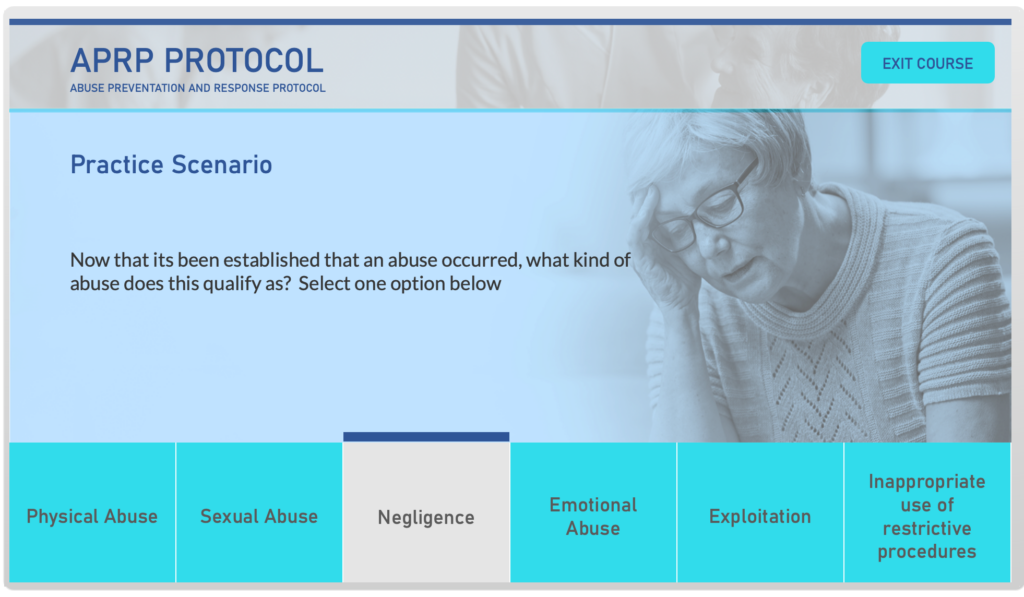
Instructional Design Project Overview and Reflection
Responsibilities: Instructional Design, eLearning Development
Target Audience: PDD Funded Stakeholders, including community service providers,
Administrators of Family Managed Services (FMS), and services operated directly by PDD (Direct
Operations).
Tools Used: Articulate Storyline, Adobe Photoshop, MindMeister, PowerPoint
Year: 2022
Project Summary
This project involved developing an interactive, scenario-based eLearning module to train stakeholders on Alberta’s revised policy framework for preventing and responding to abuse. The module emphasizes addressing immediate safety and security concerns while providing stakeholders with actionable steps to follow when abuse allegations arise. This initiative received positive feedback from senior Progress Managers and was designed to meet the needs of a diverse audience within the PDD framework.
Instructional Design Process
Identifying the Problem and Solution
Context: A large non-profit organization required training for stakeholders to align with Alberta’s
updated abuse prevention and response policies.
Challenge: Stakeholders needed a solution that bridged the gap between policy knowledge and
practical application.
Proposed Solution: A scenario-based eLearning module focusing on the following objectives:
1. Defining abuse.
2. Responding to abuse allegations effectively.
3. Implementing preventative measures.
Through shadowing HR discussions and conducting SME interviews, it was determined that a knowledge-and-skill-focused approach would best address these needs.
Design and Development Approach
Framework: The ADDIE model guided the project, ensuring a structured and iterative approach. Bloom’s Taxonomy defined measurable learning objectives, while Gagne’s Nine Events of Instruction informed the module’s instructional strategies.
Key Elements:
– Action Mapping: Created an actionable framework to close performance gaps and drive measurable improvements.
– Visual Mockups: Utilized Adobe Photoshop and Microsoft PowerPoint to present design prototypes, enabling rapid stakeholder feedback and iterative enhancements.
– Interactive Development: The final module was built in Articulate Storyline 360, incorporating buttons, triggers, variables, layers, animations, and scenario-based interactivity.
Variables added depth to practice activities, fostering learner engagement.
Results and Feedback
Strengths:
– Minimalist, visually appealing design.
– Engaging scenario-based content.
– Challenging and thought-provoking questions.
Limitations:
– Limited variety in question types and length of the module content.
Feedback: HR stakeholders praised the module’s interactivity and alignment with learning objectives, while suggesting the inclusion of diverse question types in future iterations.
Reflections and Learnings
This project demonstrated the importance of aligning instructional strategies with learner needs and policy objectives. Applying Mayer’s Principles of Multimedia Learning ensured content
comprehension and retention.
– Highlights: The design and mockup phases were particularly rewarding, as they combined creativity with instructional rigor.
– Future Enhancements: Broader question variety and extended content length to enrich the learning experience further.
